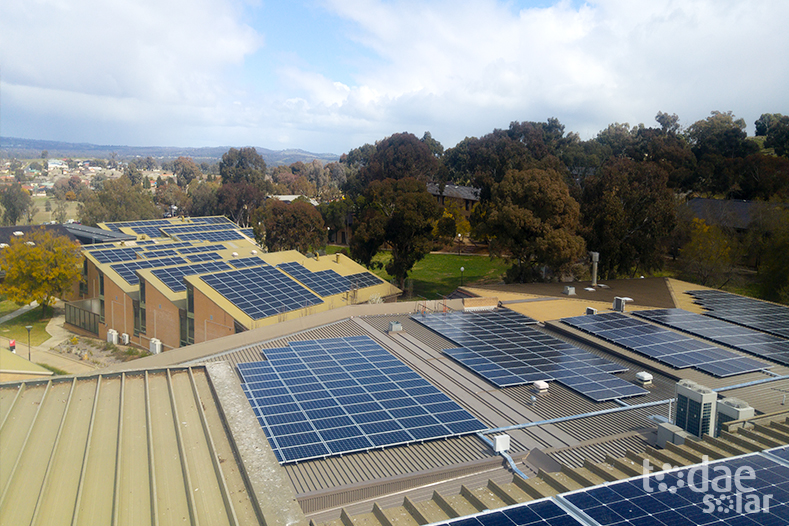Australian households have adopted rooftop PV with unprecedented relish, with families and small businesses both contributing towards the transition away from polluting fossil fuels while reducing energy costs. While a downturn is expected on the back of Covid-19, installation rates are still exceeding most forecasts.
However, the right to install a rooftop system is not a given and people looking to install small-scale solar systems as soon as this decade could face significant limitations to grid exports of their PV power and even their ability to connect a system curtailed by grid operators. The outcome could be rooftop PV assets that are not able to push all of the power they generate into the grid – pushing out assumed payback periods.
“It would be detrimental for the industry and for consumers,” explains Ben Cerini, a consultant with Cornwall Insight Australia. “Households may find themselves with stranded assets, which is a bigger issue for them than institutional investors because they are not as sophisticated [investors].”
The warning comes on the back of recent analysis from Cornwall Insight Australia, which found that 24.5 GW of sub-100kWp solar is set to be added to Australian rooftops through to 2030 – if, that is, such constraints are not put in place.
Some electrical network operators, or DSNPs, have intensified their efforts in communicating that the ability of a household to export power a rooftop PV system is far from being a given “right.” Victorian DNSP Powercor, which services the western suburbs of Melbourne and the west of the state, is advising households in the regions it serves to check into whether PV export is allowed.
“If no action is taken by 2026, customers serviced by almost half of our zone substations will experience difficulties when they try to export energy to the grid,” said Steven Neave, Powercor GM of Electricity Networks said in a statement, issued in late May. In the same press release, Powercor noted that the number of rooftop PV systems on its network increased from 142,200 at the start of 2020, to 150,500 by April – indicating the solar installation rate was likely to increase by 18% in 2020, up from 14% in 2019.
DNSPs clearly have an interest in highlighting the challenges caused by rooftop solar in operating their networks. At the same time, so do solar installers, who wish to highlight the quick investment paybacks delivered by rooftop solar. However the equations used by solar salespeople may be based on the ability to feed solar energy into the grid – something that is not given.
Distribution market
Popular content
Cornwall Insight Australia’s Cerini says that the rate of rooftop solar installations shows that work toward creating a distribution-level market should be accelerated. Cerini notes that endeavors such as Energy Networks Australia and the Australian Energy Market Operator’s (AEMO) OpEN project should be pushed forward, given the current uptake of rooftop PV.
The Open Energy Network (OpEN) project seeks to investigate the way in which distributed energy resources (DER) can be integrated into existing networks, in a way that reduces energy costs for consumers. An initial OpEN discussion paper was released in May.
Distribution markets are one of the measures proposed by the OpEN project, in that they may facilitate innovations such peer-to-peer trading of electricity and realizing alternative value streams for DER, such as rooftop solar and residential battery storage. They represent a fundamental shift towards a two-sided electricity market at the distribution level – a concept encompassed in the term “energy prosumer.”
Cornwall’s Cerini suggests that, given current installation levels, these efforts should be accelerated. He notes that the OpEN paper assumes lower solar installation rates than are currently underway, adding that by delaying the work on a distribution market may “ensure that consumers… incur unnecessary costs.
“We are years away from getting that [distribution markets] up and running and not far away from hitting the thresholds for integration,” says Cerini. He adds that this “run rate” is unlikely to decline: “Rooftop solar is not even as price sensitive as large scale renewables… as there is a range of reasons consumers want DER on their property.”
Limitations on grid exports by DNSPs will likely spur demand for energy storage – which, while expensive, allow for households to get some value for every electron generated by their rooftop system. Industry observers do note that AEMO and other bodies are working at an unprecedented pace to create an environment in which the rapid solar uptake can be accommodated.
Cerini and the Cornwall analysts note that the organization’s analysis is based on both there being a pandemic-related downturn in the small-scale solar market and average PV system sizes coming in at 4.5 kWp.
This content is protected by copyright and may not be reused. If you want to cooperate with us and would like to reuse some of our content, please contact: editors@pv-magazine.com.



By submitting this form you agree to pv magazine using your data for the purposes of publishing your comment.
Your personal data will only be disclosed or otherwise transmitted to third parties for the purposes of spam filtering or if this is necessary for technical maintenance of the website. Any other transfer to third parties will not take place unless this is justified on the basis of applicable data protection regulations or if pv magazine is legally obliged to do so.
You may revoke this consent at any time with effect for the future, in which case your personal data will be deleted immediately. Otherwise, your data will be deleted if pv magazine has processed your request or the purpose of data storage is fulfilled.
Further information on data privacy can be found in our Data Protection Policy.